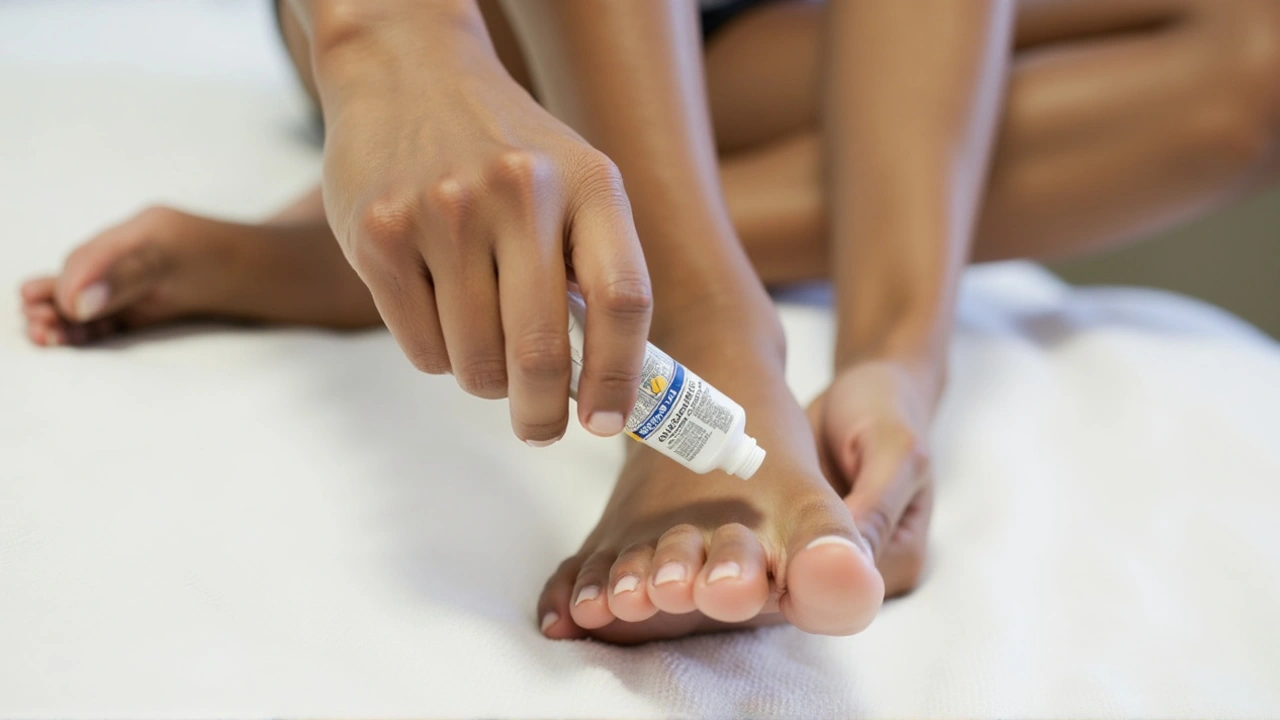Foot Fungus (Athlete's Foot): Quick, Practical Help
Got itchy, scaly feet or blisters between your toes? That’s often foot fungus, also called athlete’s foot or tinea pedis. It likes warm, damp places — socks, shoes, locker rooms — and spreads fast if you ignore it. The good news: most cases clear with simple care and the right antifungal product.
How to spot it
Look for itching, burning, peeling skin, white soggy skin between toes, or red scaly patches on the soles. Blisters or cracking at the edge of the foot can appear. If the nails turn thick, yellow, or crumbly, the fungus may have reached the toenails — that usually needs stronger treatment and more time to fix.
Fast, practical treatment steps
Start by keeping the feet clean and dry. Wash daily with soap, dry thoroughly between toes, and change socks if they get sweaty. For most uncomplicated cases, use an over-the-counter antifungal cream, gel, or spray containing terbinafine (Lamisil), clotrimazole (Lotrimin), or miconazole. Apply to clean, dry skin once or twice daily and keep going for 1–2 weeks after symptoms stop — stopping too early is the top reason infections come back.
If the skin doesn’t improve in 2–4 weeks, or if the infection is severe, painful, spreading, or involves the toenails, see a healthcare provider. Nail fungus often needs oral antifungals (like oral terbinafine or itraconazole) and can take months to clear. People with diabetes or a weak immune system should get medical advice early — what looks mild can turn serious.
Avoid topical steroids alone. They can calm inflammation but let the fungus grow and create a worse infection. Also don’t share towels, socks, or shoes while you’re infected.
Some home remedies like tea tree oil or diluted vinegar might help a little for mild cases, but they don’t replace antifungal meds. Use them cautiously and stop if your skin burns or gets worse.
Simple prevention that works
Dry feet thoroughly after showering and between toes. Wear moisture-wicking socks and rotate shoes so each pair gets a day to dry. Use breathable shoes rather than plastic ones. In public showers, pools, or gym areas wear flip-flops. Sprinkle antifungal powder or use a spray inside shoes if you sweat a lot. Wash socks and towels in hot water and avoid sharing them.
Keep nails trimmed and clean. If you get recurring infections, treat the shoes and wash socks regularly — fungus can hide in footwear for weeks. If you notice persistent or worsening symptoms, or if you have diabetes, book a check-up. Early treatment saves time and prevents complications.
Need product ideas or help choosing a cream? Look for terbinafine or clotrimazole at the pharmacy and follow the label. If you want, check with your doctor or pharmacist about the best option for your situation.

